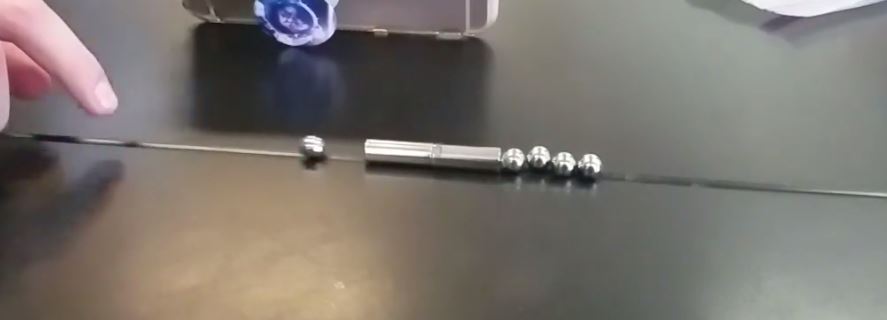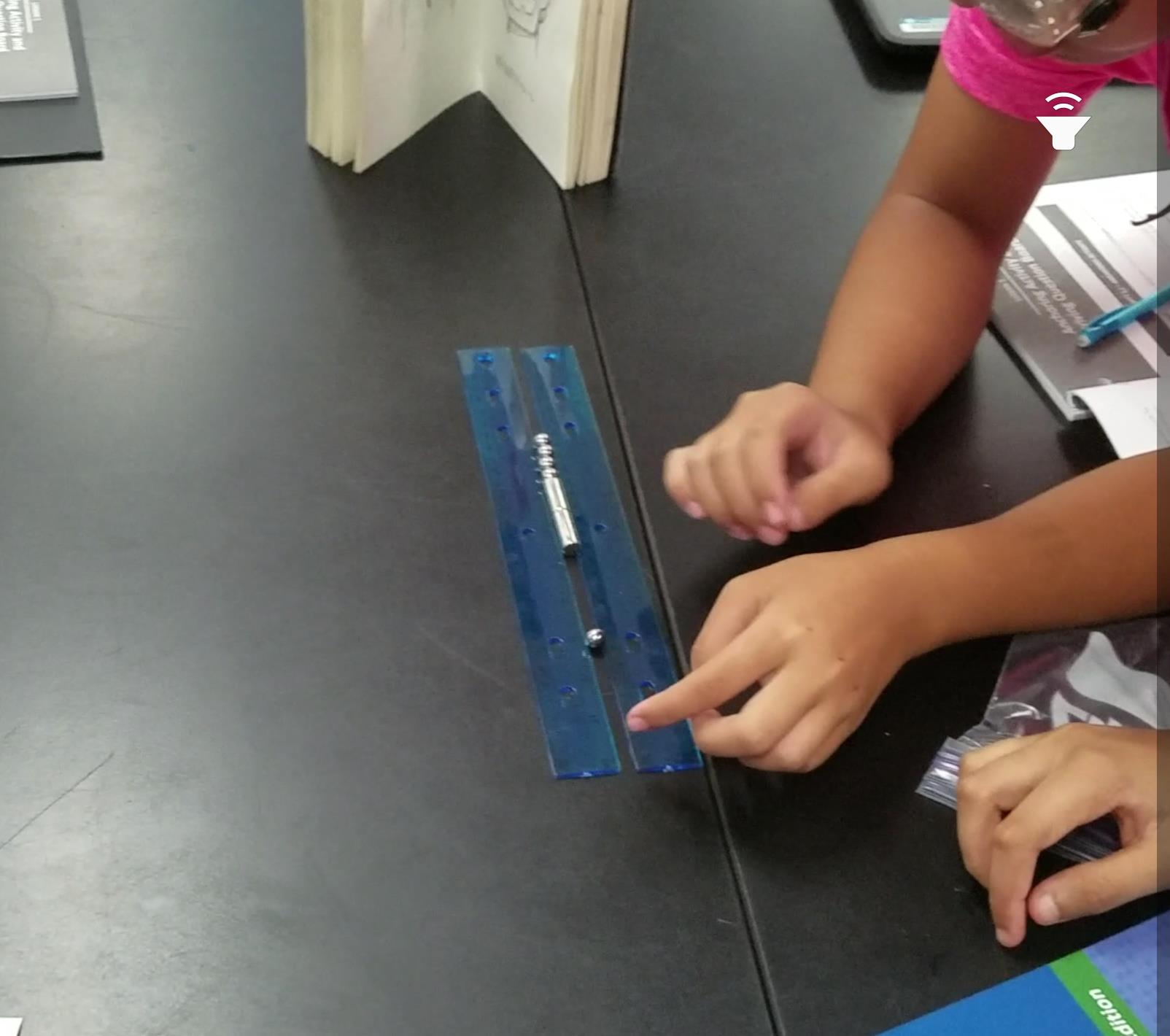Future NSTA Conferences
STEM Forum & Expo
2017 Fall Conferences
National Conference
Follow NSTA
By Cindy Workosky
Posted on 2017-06-26
Who is Ivor Robson, and why is he associated with anchoring phenomena? If you are a longtime golf aficionado, you know that Ivor Robson had a special role at the British Open. Robson spent 41 years introducing each player on the first tee, and he never missed a tee time…ever. In addition, he served as the anchor for every player, who couldn’t begin playing until Robson called out his or her name and native country.
I think Ivor Robson’s role in golf relates to anchoring phenomena in the Next Generation Science Standards (NGSS) because before our students can start their science journey, their teachers need to anchor it to something strong, such as an anchoring question or phenomenon, to serve as a foundation. Anchoring phenomena give students and teachers the stability to start a science lesson and the flexibility to formulate questions through the science processes.
How do anchoring phenomena enhance the shift from content-driven to process-driven classrooms?
 I first began to understand the purpose of anchoring phenomena a few years ago when I attended a professional development session with fellow NSTA curator Brian Aycock. I don’t recall the question he posed, but I do remember it had something to do with water, and he showed us an image of a home that was buried in snow. By using that image as the anchoring event, Aycock demonstrated how it could generate many more questions from us. He explained that future questions can come from student discussions, facilitated by the teacher.
I first began to understand the purpose of anchoring phenomena a few years ago when I attended a professional development session with fellow NSTA curator Brian Aycock. I don’t recall the question he posed, but I do remember it had something to do with water, and he showed us an image of a home that was buried in snow. By using that image as the anchoring event, Aycock demonstrated how it could generate many more questions from us. He explained that future questions can come from student discussions, facilitated by the teacher.
 Anchoring phenomena can be a game changer for science teachers. Our goal always has been to help students understand the process of science. In the past, we’ve tried to accomplish that by using vocabulary lists, encyclopedic texts, and culminating lab activities. Did we succeed? I think the best answer is partially. We helped students comprehend terms and cool science stuff, but we didn’t give them an experience that was rich enough for them to actually process science.
Anchoring phenomena can be a game changer for science teachers. Our goal always has been to help students understand the process of science. In the past, we’ve tried to accomplish that by using vocabulary lists, encyclopedic texts, and culminating lab activities. Did we succeed? I think the best answer is partially. We helped students comprehend terms and cool science stuff, but we didn’t give them an experience that was rich enough for them to actually process science.
 Anchoring phenomena based in the three dimensions of the NGSS has taken science education from traditional content-based instruction to process-based discovery. Students are no longer expected to simply memorize vocabulary lists and take a multiple-choice test to show science understanding. Today, students are using anchoring phenomena to “figure out” science. Starting with the initial phenomenon question, students are advancing on their own path to science understanding.
Anchoring phenomena based in the three dimensions of the NGSS has taken science education from traditional content-based instruction to process-based discovery. Students are no longer expected to simply memorize vocabulary lists and take a multiple-choice test to show science understanding. Today, students are using anchoring phenomena to “figure out” science. Starting with the initial phenomenon question, students are advancing on their own path to science understanding.
 What do anchoring phenomena look like in the classroom?
What do anchoring phenomena look like in the classroom?
I work at Francis Granger Middle School in Indian Prairie District 204 in northeast Illinois. This past year, we adopted the IQWST resource developed by Activate Learning. I have four science units in my current rotation, and each is based on an anchoring phenomenon.
One of my units, How will it move?, is based on the anchoring event of a magnetic cannon. In this cannon, a ball bearing is rolled slowly into two magnets. The energy from the first ball bearing is amplified by the magnets, which then propel the last ball bearing away from the apparatus at a higher rate of speed. The students worked and discovered together, then built magnetic cannons and simply explored the phenomenon. My only guiding question was, “How do you think this is occurring?”
This question guided them in their discovery. We asked more questions; small groups collaborated; and we became co-owners of the process of exploring that phenomenon.
For the next eight weeks, we used our questions, and the sub-questions from our resource, to gradually discover how things move. The anchoring phenomenon kept us rooted in our Performance Expectation (PE) and Disciplinary Core Idea (DCI). The anchoring phenomena also gave us the flexibility to naturally connect Crosscutting Concepts (CCC) and examine with Science and Engineering Practices (SEP). The anchoring phenomena allowed the three dimensions of the Framework to come alive in our classroom.
Anchoring phenomena were visible in my classroom in obvious ways. The discussions were deep and rich. The collaboration was group-based and meaningful for all learners. The science process modeling developed over time and became more and more detailed. Most importantly, students had fun as they used anchoring phenomena to explore and discover science. Learning is meant to be fun.
Why are anchoring phenomena important to the NGSS classroom?
Anchoring phenomena hold students and teachers to a PE, yet offer the flexibility to develop knowledge through questioning. They also foster an intentional use of the three dimensions of NGSS and spark activity and learning in the classroom. Anchoring phenomena provide relevance that makes students eager to learn what is next in the science process. How have you seen anchoring phenomena change your classroom? How have anchoring phenomena changed how you teach science?

Brian Klaft
Brian Klaft has taught middle school science for 26 years. He teaches at Francis Granger Middle School in Indian Prairie School District (IPSD) 204 in Aurora, IL. Previously he taught in Chicago Public Schools and South Berwyn District 100. Over the past four years Brian has served on IPSD’s science curriculum team, working with other district science staff to align the NGSS standards to district curriculum. He also serves as an NGSS@NSTA Curator and oversees the middle level waves and electromagnetic radiation topic area. Read Brian’s blog and follow him on twitter at @BKd204Sci.
Visit NSTA’s NGSS@NSTA Hub for hundreds of vetted classroom resources, professional learning opportunities, publications, ebooks and more; connect with your teacher colleagues on the NGSS listservs (members can sign up here); and join us for discussions around NGSS at an upcoming conference.
The mission of NSTA is to promote excellence and innovation in science teaching and learning for all.
Future NSTA Conferences
National Conference
Follow NSTA
Disclaimer: The views expressed in this blog post are those of the author(s) and do not necessarily reflect the official position of the National Science Teaching Association (NSTA).
Disciplinary Core Ideas NGSS Phenomena Physical Science Teaching Strategies Three-Dimensional Learning Middle School